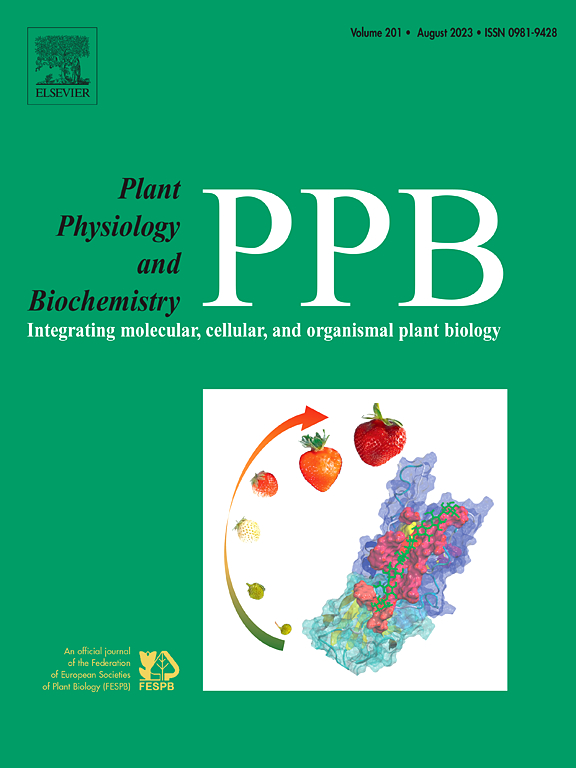The MADS-box transcription factor CmFYF promotes the production of male flowers and inhibits the fruit development in melon (Cucumis melo L.)
IF 6.1
2区 生物学
Q1 PLANT SCIENCES
引用次数: 0
Abstract
The FOREVER YOUNG FLOWER (FYF/AGL42) gene plays an important role in regulating the flower development especially the flowering time, and senescence and abscission of floral organs. Melon is an important horticultural crop, and the flower development has an important influence on pollination, fertilization and final fruit yield. However, the function of FYF homolog is still unknown in melon. In this study, the characteristic of melon CmFYF was analyzed combining with molecular biology, developmental biology and biochemical tools. CmFYF was present in all detected tissues of melon, but its expression level was significantly higher in shoot apex of lateral branches and male flowers than that in other tissues. Subcellular localization revealed that CmFYF was located in the nucleus. CmFYF was able to respond to multiple hormone and environmental signals including GA3, SA, MeJA, cold and drought. Ectopic expression of CmFYF in Arabidopsis resulted in the early flowering phenotype and increased plant height, but had no effect on the flower organs or fruits development. In melon, overexpression of CmFYF increased the number of male flowers, but inhibited the size of fruit. These results suggested that CmFYF of melon was partially equivalent to AtFYF of Arabidopsis. Further biochemical analyses indicated that CmFYF directly interacted with CmAGb (a homolog of Arabidopsis AGAMOUS), CmKNAT7 (KNOTTED-LIKE HOMEOBOX OF ARABIDOPSIS THALIANA 7) and itself at the protein level. Therefore, this study enriched the function of FYF homologs and revealed a preliminary molecular mechanism underlying the male flower production and fruit development in melon.
求助全文
约1分钟内获得全文
求助全文
来源期刊
CiteScore
11.10
自引率
3.10%
发文量
410
审稿时长
33 days
期刊介绍:
Plant Physiology and Biochemistry publishes original theoretical, experimental and technical contributions in the various fields of plant physiology (biochemistry, physiology, structure, genetics, plant-microbe interactions, etc.) at diverse levels of integration (molecular, subcellular, cellular, organ, whole plant, environmental). Opinions expressed in the journal are the sole responsibility of the authors and publication does not imply the editors'' agreement.
Manuscripts describing molecular-genetic and/or gene expression data that are not integrated with biochemical analysis and/or actual measurements of plant physiological processes are not suitable for PPB. Also "Omics" studies (transcriptomics, proteomics, metabolomics, etc.) reporting descriptive analysis without an element of functional validation assays, will not be considered. Similarly, applied agronomic or phytochemical studies that generate no new, fundamental insights in plant physiological and/or biochemical processes are not suitable for publication in PPB.
Plant Physiology and Biochemistry publishes several types of articles: Reviews, Papers and Short Papers. Articles for Reviews are either invited by the editor or proposed by the authors for the editor''s prior agreement. Reviews should not exceed 40 typewritten pages and Short Papers no more than approximately 8 typewritten pages. The fundamental character of Plant Physiology and Biochemistry remains that of a journal for original results.

 求助内容:
求助内容: 应助结果提醒方式:
应助结果提醒方式:


